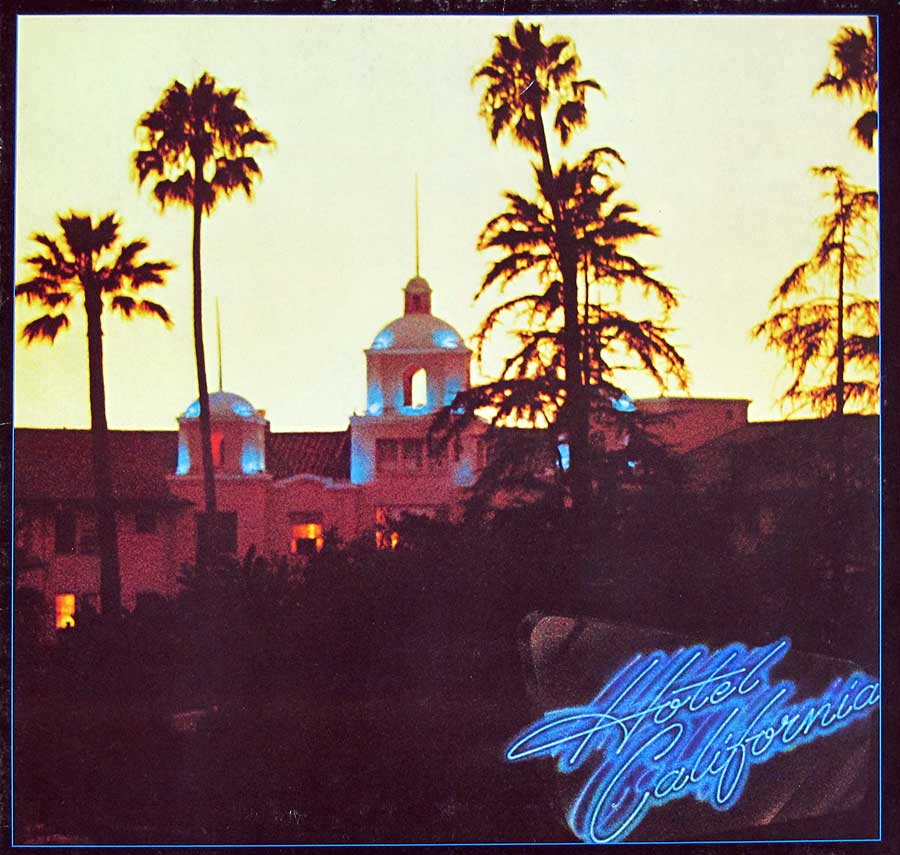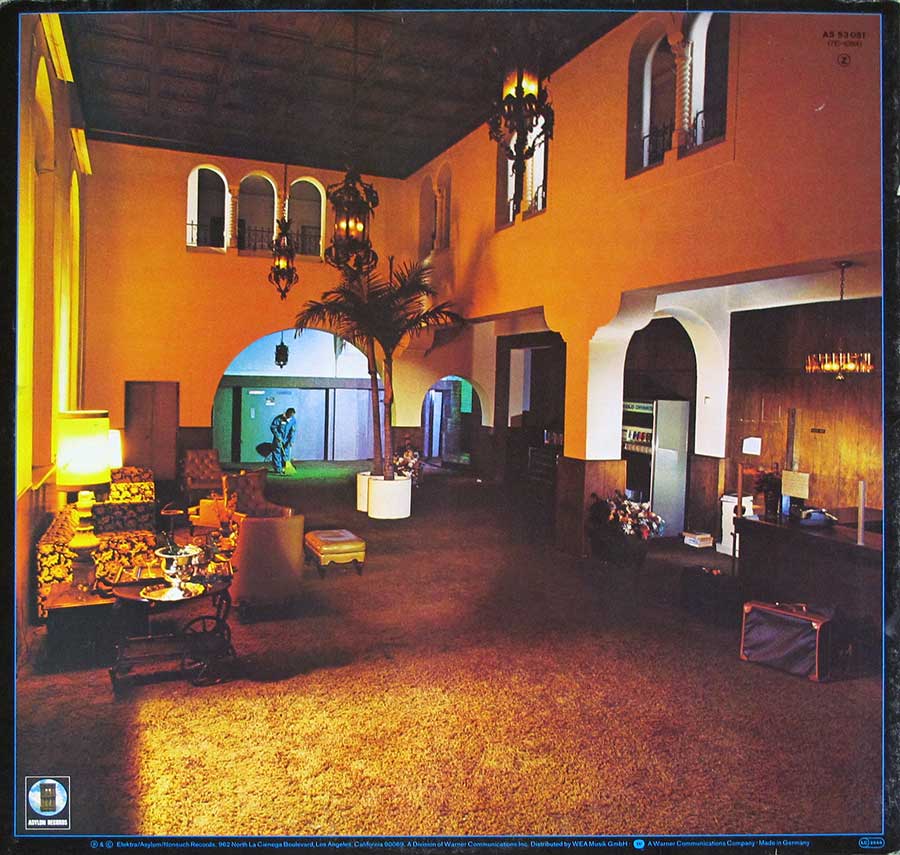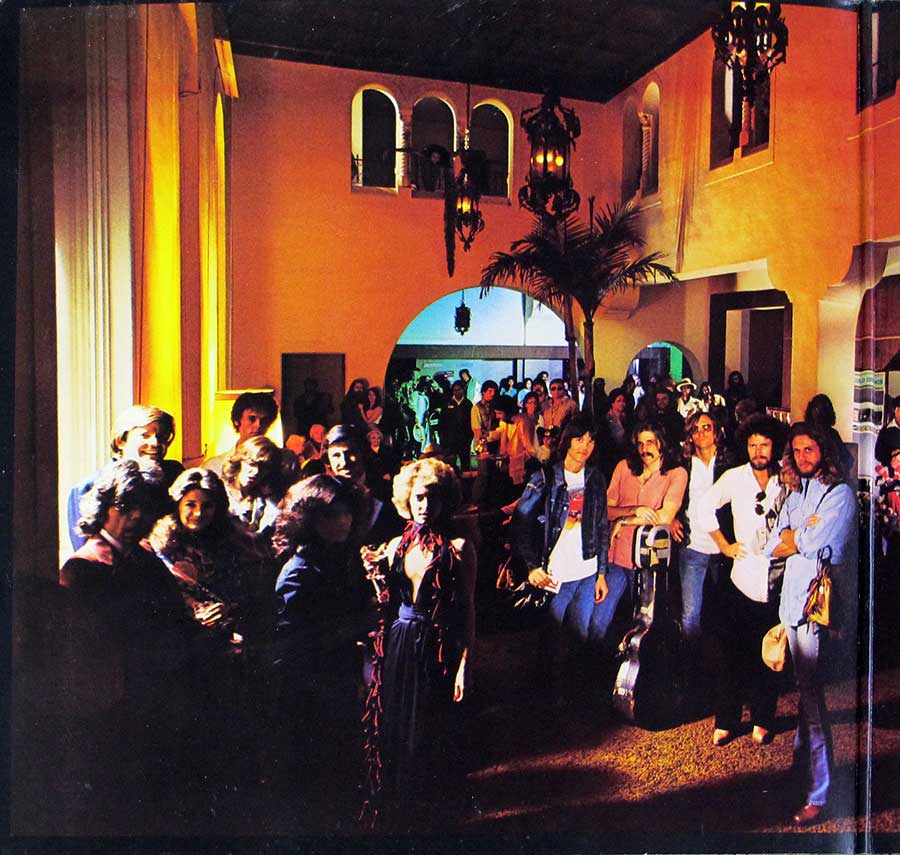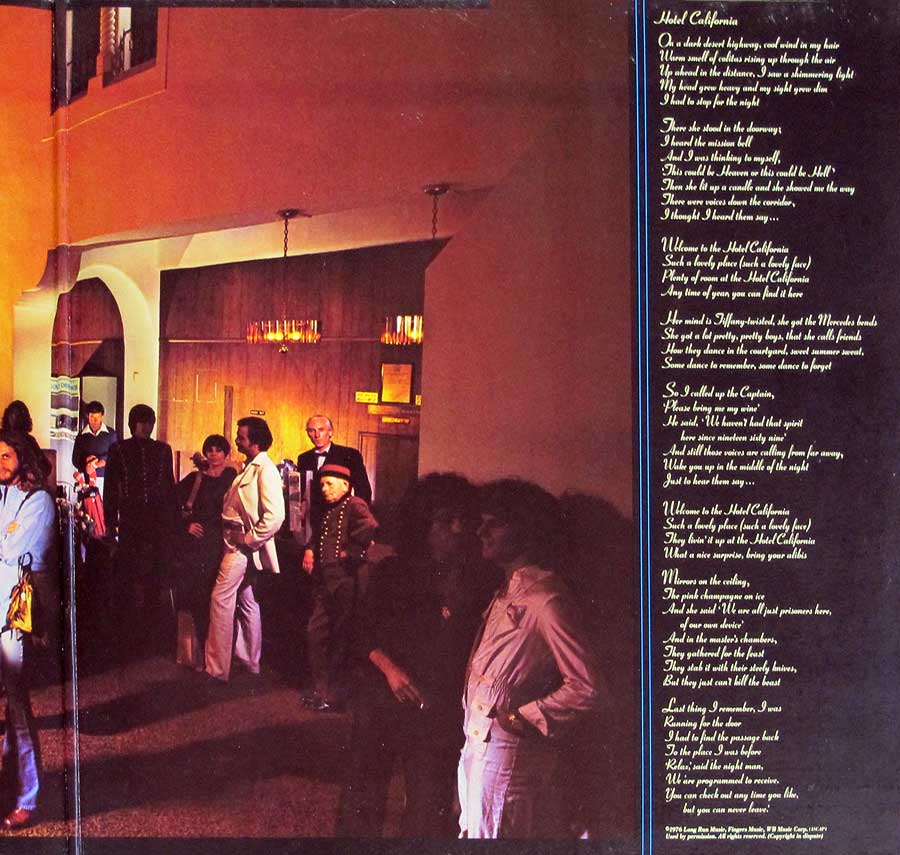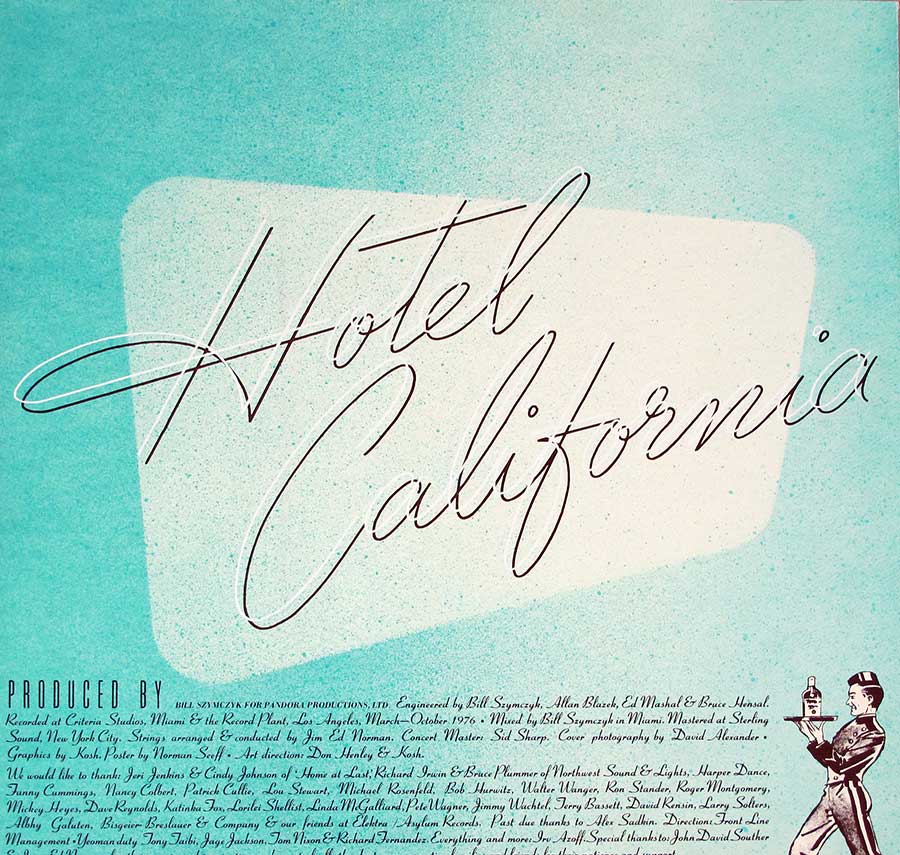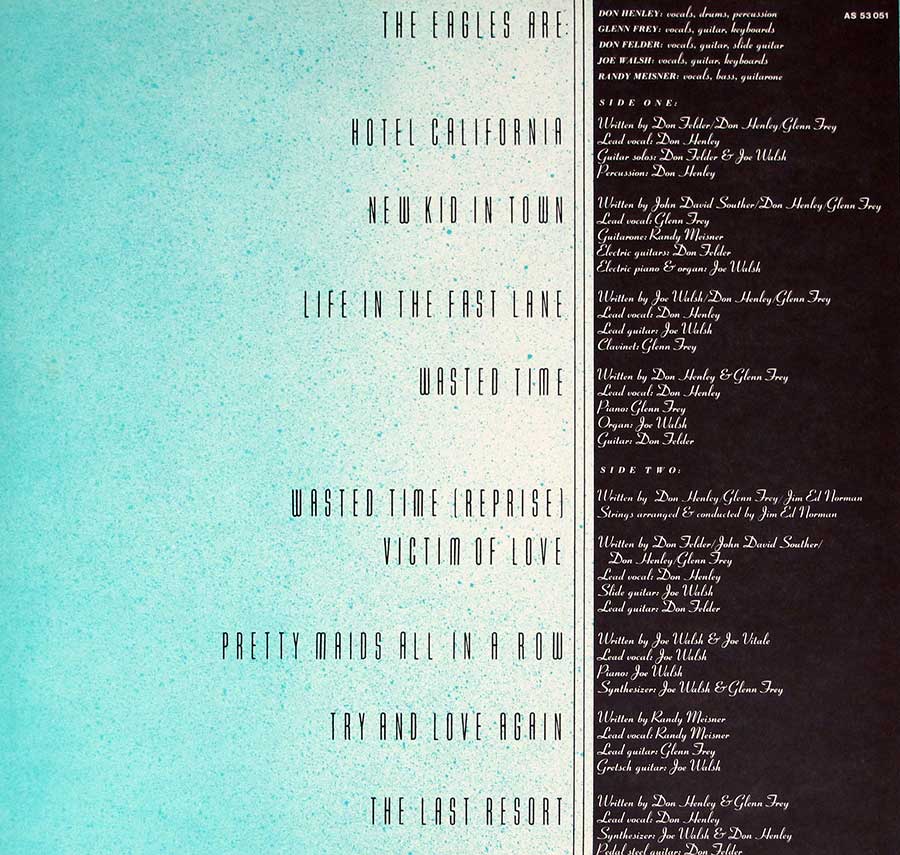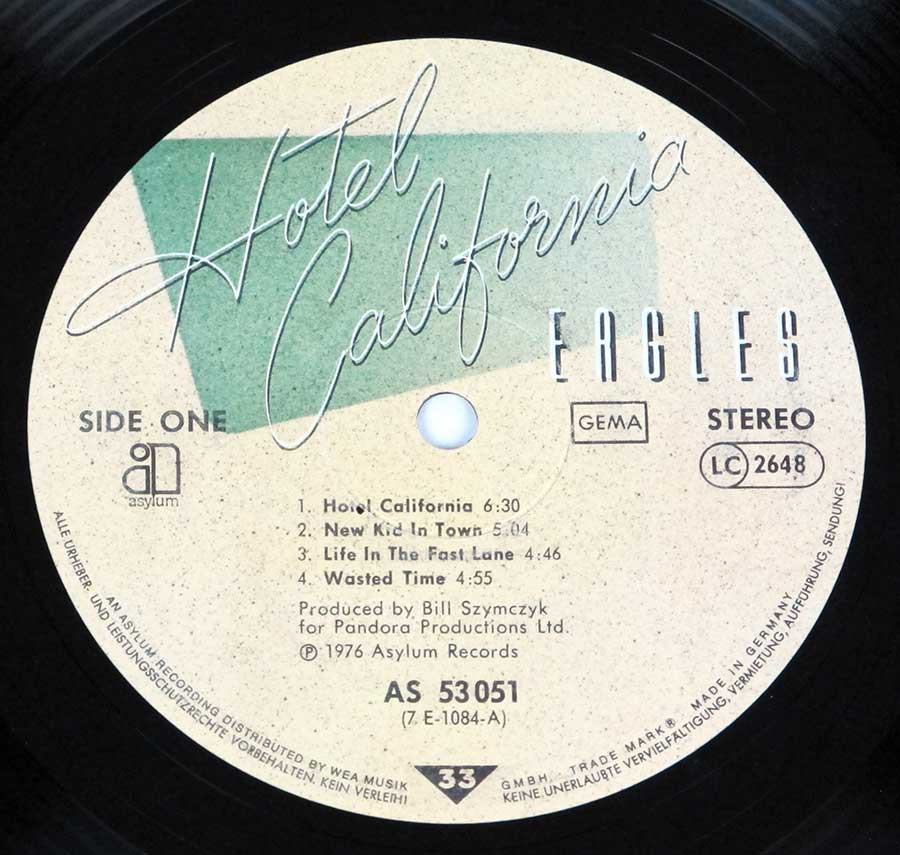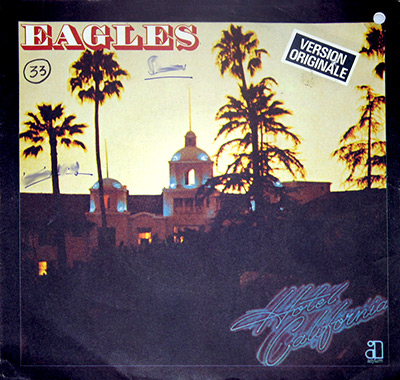In 1976, The Eagles unleashed Hotel California, a work so lush, so cynical, and so engrossing that it took the music world by storm, becoming an iconic record of the late Õ70s rock scene. The band, already mainstays of the Southern California sound, now aimed their sights higher, reaching beyond any geographical confines or style restrictions. Hotel California was more than just music; it was a probing look into the American psyche, a scathing dissection of fame, excess, and disillusionment, crafted through a masterful blend of rock, folk, and country.
This was the bandÕs fifth album, but more than that, it was a kind of metamorphosis. It marked the first time that Joe Walsh appeared on an Eagles record, adding a distinct, grittier edge that elevated the bandÕs already immaculate production to a new level of artistry and impact. With his addition, the sound became sharper, more attuned to the dangers of rockÕs seductive yet treacherous lifestyle.
Historical Context: The End of Innocence
In the mid-1970s, America was emerging from a turbulent era of protests, social upheaval, and the lingering hangover of Vietnam. This cultural atmosphere gave birth to a restless pursuit of wealth, fame, and the idealized notion of success that, for many, led to empty indulgence and spiritual malaise. The Eagles captured this dichotomy, channeling it into Hotel California with an almost prophetic precision. The album wasnÕt just about personal excess; it was a soundtrack to a nation obsessed with pleasure but wracked with anxiety, a fitting emblem of post-Nixon America.
Musical Exploration: Genre-Bending as Art
Hotel California dabbled in genre-blending, juxtaposing polished rock riffs with country overtones and folk storytelling. But this wasnÕt just genre experimentation for its own sake; each stylistic choice heightened the narrative complexity of the songs. Take the title track, for instance. It opens with a haunting acoustic guitar progression, which then expands into layers of electric guitar that Walsh and Don Felder seamlessly weave together. The arrangement builds an unsettling tension as the lyrics guide listeners through a tale of eerie seductionÑa rock opus masquerading as a hotel, luring guests into a hedonistic trap.
With tracks like ÔLife in the Fast Lane,Õ WalshÕs gritty guitar melded with Don HenleyÕs worn, sardonic vocals, creating a raw commentary on the dangers of high-speed lifestyles. It was as much a rockerÕs anthem as it was a cautionary tale, delivering its message with a mix of exhilaration and foreboding.
The Dark Mythology of ÔHotel CaliforniaÕ
The title track remains one of rockÕs most dissected songs, steeped in imagery that has fueled endless speculation. Some interpret it as a scornful portrayal of the Los Angeles music sceneÑa hollow paradise luring hopefuls into the industryÕs moral wasteland. Others see it as a cautionary tale of fame, decadence, and the eternal human search for meaning. HenleyÕs lyrics allude to an unnerving sense of imprisonment: ÔYou can check out any time you like, but you can never leave.Õ ItÕs a line that lingers long after the final guitar solo fades, encapsulating the albumÕs main themeÑthe illusions of freedom and the futility of escape.
Controversies: Allegories, Misinterpretations, and Conspiracy Theories
Not surprisingly, the songÕs sinister overtones have led to a swirl of controversies and conspiracy theories. Rumors sprang up about hidden satanic messages or a critique of cults like Scientology, and though the band has consistently denied these interpretations, the ambiguity only fueled the trackÕs mystique. The cover itself, featuring the famous Beverly Hills Hotel under darkened skies, contributed to the air of mystery, creating a visual metaphor for the allure and danger that Hotel California sought to convey.
Production Team: Perfecting the Dark Opus
Produced by Bill Szymczyk, the album benefited from an unprecedented level of studio craftsmanship. Szymczyk had already worked with the band on their previous albums, but Hotel California saw him pushing them to even greater heights, maximizing the technical precision that became the EaglesÕ hallmark. SzymczykÕs approach allowed for a seamless balance between musical layersÑvocals, guitars, keys, and rhythm sections all intricately interlocked, delivering a sound that was both pristine and deeply resonant.
Recording took place at Criteria Studios in Miami and at The Record Plant in Los Angeles, two hotspots for rock production during that era. The Record Plant, known for its laid-back but technically precise atmosphere, was ideal for the albumÕs dense soundscapes. The sessions reportedly had their own tensions, with the band feeling the pressure to deliver something monumental. But rather than hinder the process, these dynamics added to the albumÕs intensity, fueling performances that were both restrained and explosively emotional.
The Songs: Complex and Cohesive
While ÔHotel CaliforniaÕ stands as the most memorable track, the rest of the album showcases the EaglesÕ versatility and thematic ambition. ÔNew Kid in TownÕ explores the fleeting nature of success and the rapid turnover in rock fameÑa warning to those caught in the ever-churning mill of the music industry. Glenn FreyÕs smooth delivery here softens the harsh message, creating a bittersweet homage to those who ascend only to be replaced.
ÔWasted TimeÕ is a ballad of regrets and broken promises, marked by the haunting orchestration that Szymczyk envisioned to enhance its poignancy. With lyrics touching on lost love and the inevitable emptiness of chasing dreams, the song resonates as one of the most vulnerable moments on the album.
And then thereÕs ÔLife in the Fast Lane,Õ a gritty powerhouse driven by a staccato guitar riff from Walsh that embodies the reckless abandon of the high life. The lyrics, delivered with a snarl by Henley, speak to the frenzied, heedless pace of a lifestyle that feels both exhilarating and ruinous.
Gatefold Art: A Dark Glamour
The albumÕs gatefold cover featured a striking photograph by David Alexander, with the band members positioned almost as specters within the ornate lobby of the Beverly Hills Hotel. Inside, the artwork captured their polished-yet-haunted personas, mirroring the themes of allure and entrapment running through the record. ItÕs more than just an aesthetic choice; the gatefold packaging reflects the grandeur and fatalism woven throughout the albumÕs narrative, inviting listeners to open it like a forbidden book they canÕt resist but fear to finish.
